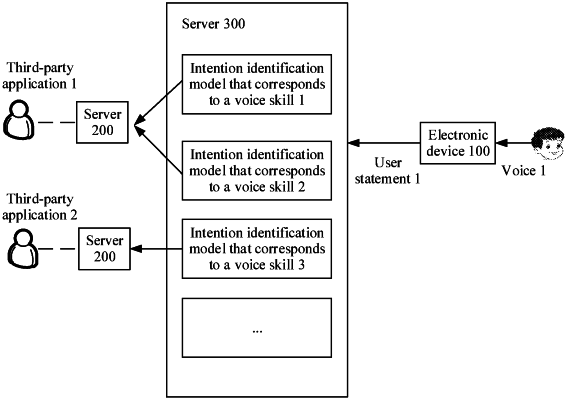| CPC G06F 40/30 (2020.01) [G06F 18/214 (2023.01); G06F 40/35 (2020.01); G06N 20/20 (2019.01)] | 20 Claims |

|
1. An intention identification model learning method, comprising:
receiving positive data that corresponds to each of a plurality of intentions in a first skill and that is from a skill developer;
generating, based on the positive data, negative data corresponding to each of the intentions;
obtaining training data corresponding to a plurality of second skills that is similar to the first skill according to similarity criteria;
performing learning, based on the training data and a first basic model, to generate at least one second basic model, wherein the first basic model is preset;
extracting, for each of the intentions, a keyword corresponding to each of the intentions, wherein the keyword is a key feature that affects a weight of the first basic model;
performing one of combining keywords corresponding to different intentions in the first skill, or combining the keywords with words that are unrelated to the first skill and obtaining combined words for generating at least part of the negative data that corresponds to the different intentions; and
performing learning to generate an intention identification model based on the positive data, the negative data, and the at least one second basic model to train the intention identification model for the first skill, wherein the intention identification model for the first skill is trained using first data that is in the first skill including the positive data, and second data that is out of the first skill including the negative data that corresponds to each intention in the first skill and the training data for the second skills.
|